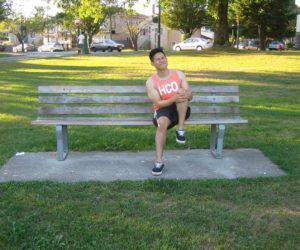The hypermobility syndrome is a condition where the joints moves easily beyond the normal range expected for a joint. It is a benign condition and usually affects children especially girls.
Conditions that puts on at high risk of developing this condition includes tendinitis, bruising, carpal tunnel syndrome, scoliosis, osteoarthritis, joint instability, ankle sprains, fibromyalgia, pelvic dysfunction, fractures and exocrine gland dysfunction.
Symptoms of hypermobility syndrome

- Pain in the knees, fingers, hips and the elbows
- Joint dislocation and sprain on the affected joint
- Scoliosis or curvature of the spine that result to back pain
- Fatigue
- Anxious mood
- Insomnia
- Depression
- Headaches
- Exercise-induced pain
- Joint stiffness
- Clicking sound can be heard in the affected area
- Poor coordination
Causes of hypermobility
- Muscle tone or strength
- Bone shape or the depth of the joint sockets
- Poor sense of proprioception
- Family history of hypermobility
Treatment
- Take the prescribed anti-inflammatory medications such as ibuprofen and acetaminophen to lessen the joint pain.
- Elevate the affected joint to lessen the swelling and the flow of blood in the area. Raise the injured joint in a couple of pillows to keep it elevated.
- Take plenty of rest especially the affected joint. Avoid placing stress on the area for at least 24-48 hours for fast healing of the condition.
- Apply heat on the affected joint for at least 15-20 minutes to lessen the pain in the joint. Heat can be in the form of a hot water bottle or heating pad set on low or medium heat.
- Alternately, apply cold therapy on the affected area in the form of an ice pack or a bag of frozen vegetables for at least for 10 minutes intervals to lessen the swelling and the pain.
- Maintain a regular sleeping routine and plenty of good sleep for the fast healing of the condition. Be aware of the sleeping position. Avoid lying on positions that puts plenty of stress on the joints to prevent waking up feeling sore or unrested. Place pillows between the knees to support the hips and the back. Stretch out the muscles thoroughly upon waking up.
- Perform low-impact exercises regularly such as swimming or biking.
- Drink plenty of fluids especially water to prevent dehydration and worsen the condition.
Tips
- Avoid overextending the joints to prevent the development of arthritis which is the inflammation of the joints. It can also cause the dislocation of the joints due to minor trauma or self-manipulation.
- Use braces or orthotics when performing exercises to protect the joints. If the joint is sensitive or loose, tape or wrap the affected area before stressing it.
